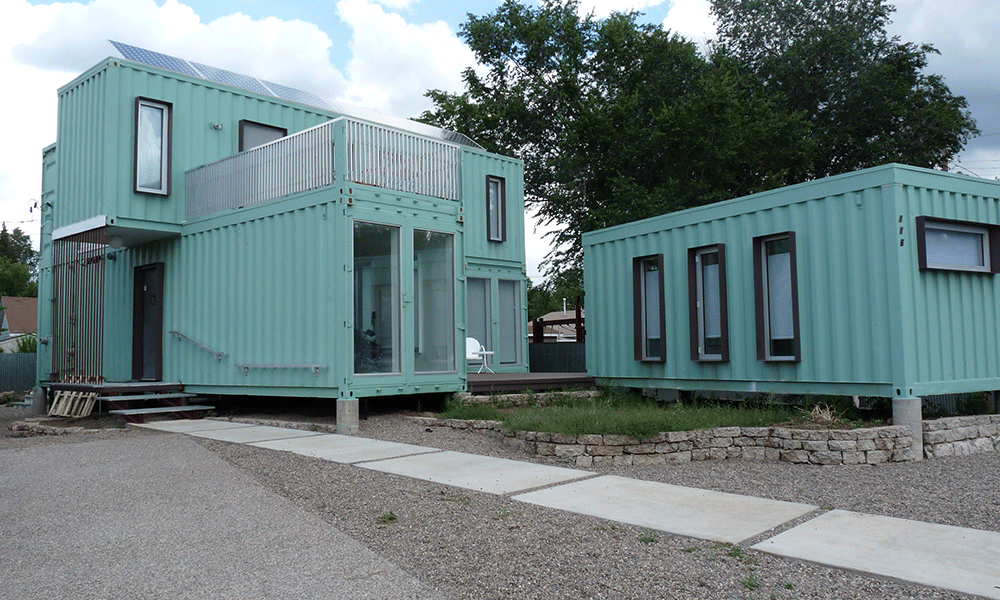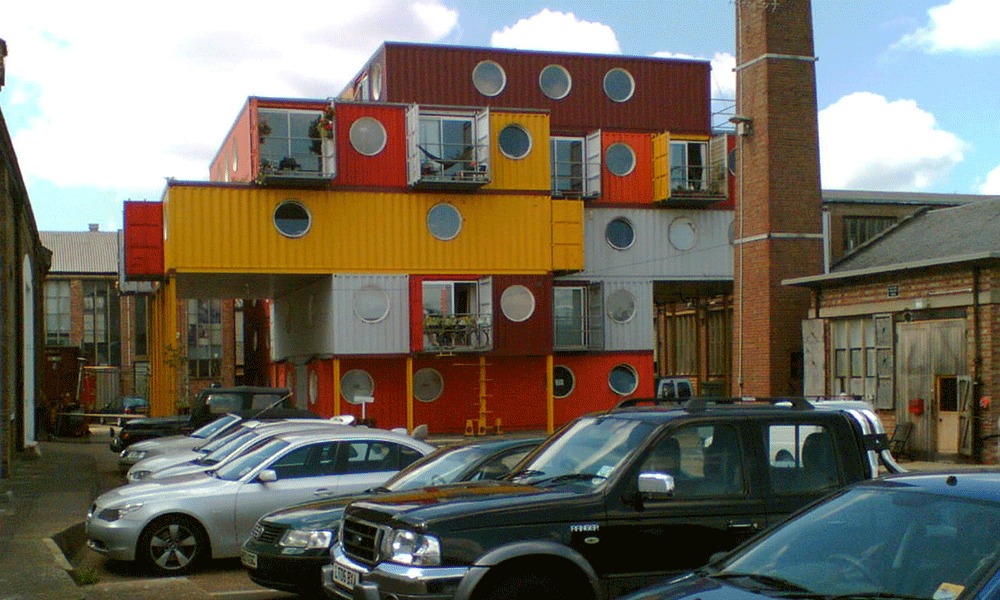Article Excerpt
Shipping home containers offer versatile designs with durable, sustainable materials. Find out whether a shipping home container might work for you.
Many trends in home design these days focus on sustainability. Shipping container homes, also known as “cargo homes,” are part of this movement. While this is not a new concept, more and more people are opting to use shipping containers in Texas as a way to save money on building materials and create a durable home.
How do shipping container homes work? How much do they cost, and are they worth it? If shipping containers are movable, does that mean that shipping container homes are also movable? Learn more about whether this type of home might be right for you.
What is a shipping container home?
Shipping containers homes are exactly what the name suggests — houses built primarily from repurposed shipping containers. Officially known as intermodal containers, shipping containers are large steel boxes designed for use in multiple modes of transport. They have fittings at all eight corners that allow them to be lifted and stacked on trucks, trains, and ships.

Photo by David Dibert from Pexels
Standard shipping containers are 8 feet wide and 8.6 feet tall. They may be 10, 20, or 40 feet long. “High cube” shipping containers are a foot taller. They can also have specific designs for various purposes. Refrigerated shipping containers, also known as “reefer containers,” have extra insulation for transporting perishable goods.
The versatility of shipping containers makes them useful in home design. Shipping container homes use a variety of configurations to create unique floorplans.
How much do shipping container homes cost?
A small cargo-home might cost $10,000 to $35,000. A large home could cost $175,000 or more. The total cost includes several important items:
Buying land for your home
Purchasing the containers
Installing the containers on your property, including pouring a foundation
Adding insulation, plumbing, and other utilities
Adding other amenities
A small, used shipping container might cost around $1,500 to $2,000. A large, new container might cost around $8,000. With lengths ranging from 10 to 40 feet, one container can provide 80 to 320 square feet of living space.
By itself, a shipping container isn’t much of a home. It’s dark and the acoustics are terrible. You’ll need a foundation to keep it level and stable. You’ll need to add insulation and utilities like sinks, toilets, HVAC, and electrical outlets.

Photo by Angel Schatz from Flickr
What are the pros and cons of a shipping container home?
Like anything, cargo homes have both advantages and drawbacks.
Pros of Shipping Container Homes
Convenience: Many shipping container homes are available in prefabricated form. All you have to do is have it installed.
Standardized costs: the bulk of your home was built in a factory to international specifications. The biggest variable in terms of the cost involves whatever you are adding.
Scalability: Suppose you need more space in your home. You can just add more containers.
Durability: Shipping containers are designed to last through many trips over land and sea. Compared to that, facing the elements while sitting on your property is easy.
Sustainability: If you use old containers that have been retired from the shipping industry, you’re helping cut back on multiple forms of waste.
Cons of Shipping Container Homes
Limited floor space: The rooms of your home will be 8’ wide at the most. You can cut out the walls between two or more containers, but that brings its own problems.
Reinforcement: The more you modify the containers, such as by cutting into the metal walls and floors, the more additional reinforcement you will need to add.
Lack of utilities and amenities: By itself, a standard shipping container is just a metal box. You’ll have to add insulation, plumbing, internet service, etc.
Condition of the shipping container: You need to be certain about how much cleaning, repair, and maintenance a used container is going to need. You could buy a new container, but then you’re not helping the planet by recycling.

Photo by plentyofants from Flickr
Are shipping container homes safe?
Possible risks associated with shipping container homes include:
Lack of reinforcement: Shipping containers were not designed with foot traffic in mind, so they need additional support to keep the walls, floors, and ceilings stable.
Chemical exposure: Containers used to ship hazardous chemicals could have residue that requires extensive cleaning. Paints and finishes used in industrial containers can also be dangerous.
Are shipping container homes movable?
You can move a shipping container home, although the more you do to customize your home, the harder it might be to move. A single container, by design, fits easily onto a trailer. Multiple containers welded together present a much greater challenge. Once a cargo home is attached to a foundation, it is often best to think of it as a permanent attachment to the land.
Ready for a place to call home?
Owning a home is almost always a smart money move, no matter the size of the property. Get started with the mortgage lender Texans trust! Take 90 seconds and fill out our pre-approval form to see exactly what you qualify for.



